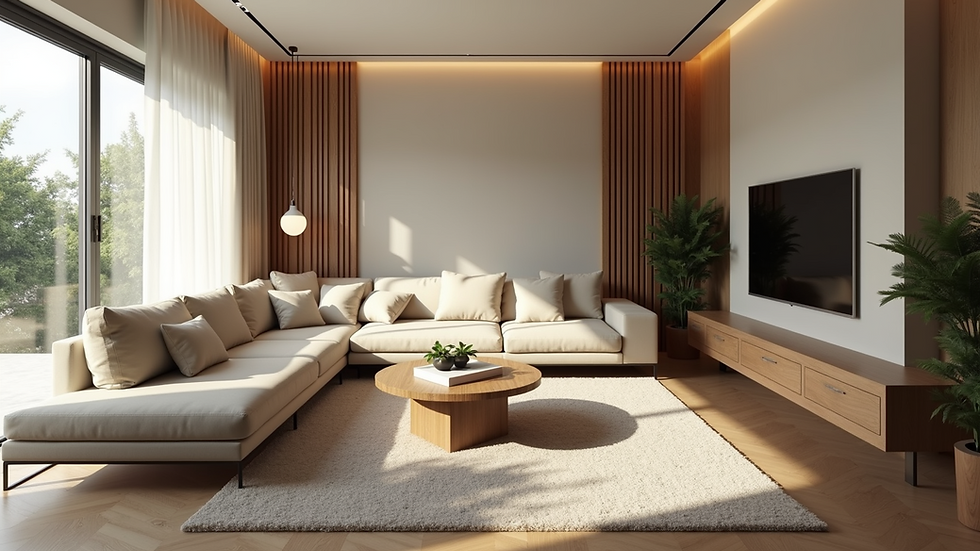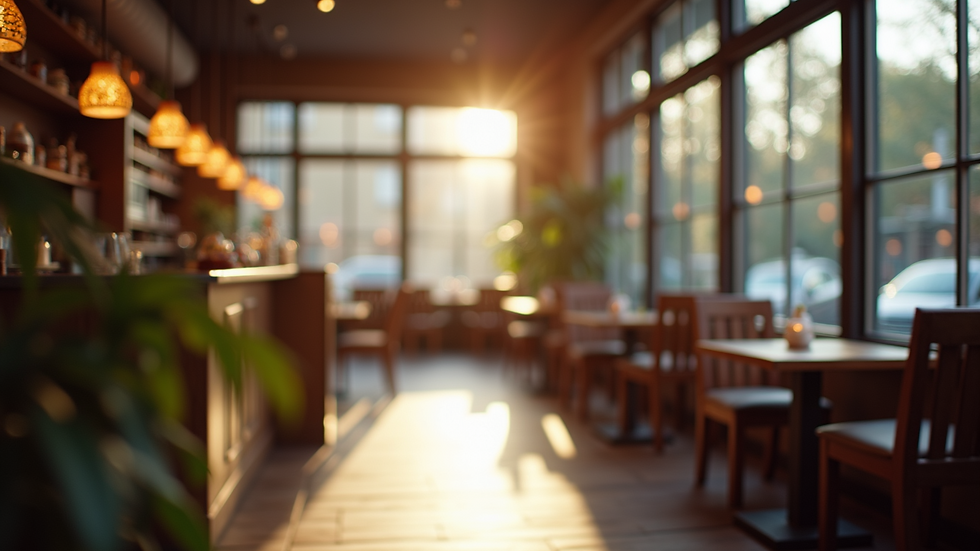Exploring Illumination: A Comprehensive Guide to Effective Lighting Strategies
- Journalising Designers
- Aug 8
- 3 min read
Shedding Light on Lighting Strategy
Lighting is a crucial part of design that significantly affects a space's mood, functionality, and overall look. Whether you're designing an inviting café, an exciting gallery, or a peaceful home, knowing how to use light effectively is vital. This guide offers designers a straightforward path to developing a lighting strategy grounded in careful research and practical insights.
Natural vs Artificial Light: Understanding Sources
When starting a lighting design project, focus on two main light sources: natural and artificial.
Natural light comes from the sun and changes throughout the day and seasons. During the summer months, for example, natural light can fill a room for up to 14 hours a day, while in winter, that could drop to about 8 hours. By considering window placement, any obstructions, and the local climate, designers can enhance how sunlight affects a space. For example, a south-facing window can maximize sunlight, making a room feel more spacious and warm.
Artificial lighting includes a variety of techniques, from incandescent bulbs to energy-efficient LED fixtures. Each kind of light has distinct characteristics, like color temperature and brightness. Research suggests that LED lights can be 75% more energy-efficient than traditional incandescent bulbs. Understanding these different options helps designers choose fixtures that not only support natural light but also meet the space's needs.
Shadow Behavior & Highlights: The Invisible Sculptor
Lighting doesn't just fill a room; it shapes spaces through shadows and highlights.
Shadows add depth and character, enhancing the drama or intimacy of a space. For instance, in a restaurant, the shadows cast by textured walls can create a cozy, inviting environment. Designers should consider how various materials influence shadows; a rough stone surface might cast intricate shadows that add interest, while a smooth surface might feel more sterile.
Highlights, on the other hand, guide the viewer's attention to specific features in a room. For example, strategically placing lights over artwork can draw guests in, inviting them to appreciate the details of your design. By mastering the balance between shadows and highlights, designers can achieve a thoughtful and engaging lighting composition.
Essential Tools for Lighting Research (Tech + Tactile)
To create effective lighting strategies, designers need both high-tech tools and practical methods.
Technological tools like Dialux and Relux allow designers to simulate lighting scenarios. These programs give insight into light levels, energy use, and the potential for glare, making them invaluable for planning. For instance, a simulation might reveal that a certain type of fixture could reduce energy consumption by 30%.
Tactile methods matter too. Using physical mock-ups and material samples enables designers to see and feel how different light sources interact in real environments. For example, testing how a specific LED bulb warms up a space before final decisions ensures a glow that feels just right.
Testing Ideas: Site Visits, Mock-ups, and Adjustments
After thorough research, it’s time to test ideas through site visits, mock-ups, and adaptive changes.
Site visits help designers observe existing lighting and identify challenges. Watching how natural light shifts throughout the day can guide decisions about where and how to place artificial lights.
Creating mock-ups, whether through 3D models or digital tools, allows designers to visualize concepts clearly. This part of the process often uncovers issues that might require changes. For instance, a digital simulation might show that a light fixture is too bright for a cozy reading nook, prompting a design adjustment.
By continually testing and adjusting based on real feedback, designers can elevate their work to new heights.
Layering Light: From Concept to Execution
Successful lighting design involves layering different types of light for a balanced and functional environment.
Ambient lighting provides overall illumination, ensuring the space is well-lit.
Task lighting targets specific areas for activities, like cooking or reading.
Accent lighting draws attention to art or architectural features, adding richness to the overall design.
It's important to find the right mix. For example, too much ambient light can overwhelm a space, while too little task lighting can make it difficult to work comfortably. By sensing the balance between these elements, designers can craft a lighting strategy that enhances both the aesthetic and practicality of the space.
Illuminating Spaces: A Designer's Approach
Effective lighting design is a thoughtful process that begins with diligent research and concludes with the layered execution of light. By understanding light sources, mastering shadows and highlights, and using essential research tools, designers can create welcoming and functional spaces.
As light behaves like a material, treating it with thorough consideration is essential. By appreciating the complexities of illumination, designers can profoundly transform spaces and enrich the experiences of everyone who enters.




